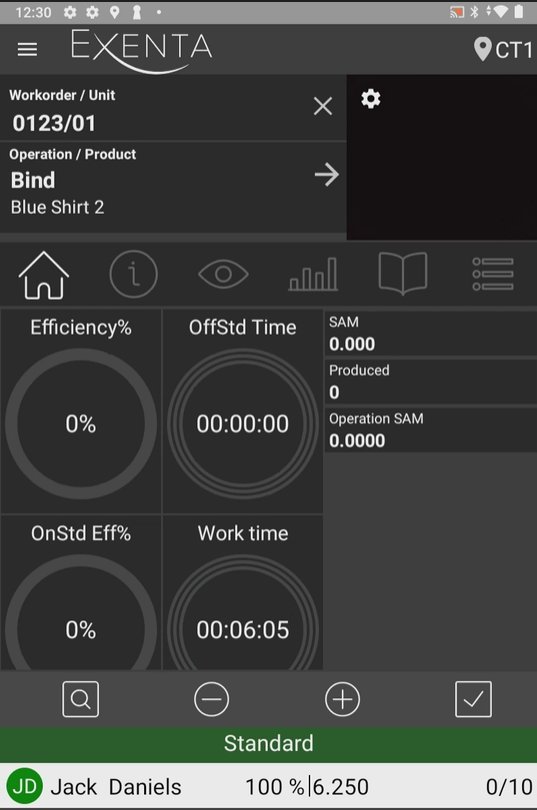Liveproductiondocumentation
Live production documentation
How it works
The Shopfloor documentation system is used to supply product and operation documentation to the operator at the time of scanning a job ticket on the tablet.
Even if your documents and instructions are created in different formats and maybe also with various name standards, they can still be used with Shopfloor.
The Shopfloor Documentation System will look for documents on a file share, NAS or server directory. It will index all documents in the folder and all subfolders. The indexed information is then cached to speed up the query process. The query process can then be customized using Product, Operation or Work Order information. These data fields are then used to find the correct path, name and extension of the document file.
App

The operator will see blue document tags in their main screen after scanning the job ticket. When touching the tag, the document will download from the server and open using the default viewer for the file document file type.
Settings
First setting to specify, is the location of the documentation root folder.
Note that this folder must be accessible by the user account that is running the web server application. This is normally the built in account IUSR
NOTE! The indexing process works once an hour to save performance. So changes made in the root directory might not be reflected until the next hour.

Root directory structure and queries
The queries used to find documents must match the way documents are structured in the root folder. For simplicity Shopfloor is setup with two default queries for finding documents by Operation ID and by Product ID. These queries can be changed and another two queries can be added to find documents.
NOTE! More queries will affect performance so if they are not needed it is better to leave the query settings blank.
Shopfloor default queries
So let’s say “c:\docs” is our root directory for production documentation.
To use these standard queries the structure under root should look like below.
Operation documents in a folder called “Operations” where each filename starts with the corresponding operation ID.
Product documents in a folder called “Products” where each filename starts with the corresponding product ID.
The image below shows two pdf’s for product 91000365, one pdf for 91000366 and one for 9100068. Note that the filename “x91000365.pdf” will not be found using standard query.

The app screen shot in the previous section show the two pdf’s for Product 91000365 to the operator as 2 blue tags in the main screen.
Customizing queries
The folders and files under the root path can be structured in various ways. That’s no problem. As long as the path to the document or the document name contains parts that are searchable using data from Shopfloor.
The document fields that can be queried are:
path – the path to the document starting under the root directory
name – the file name including the extension
extension – the extension of the file (including the dot, so “.pdf” for example)
Shopfloor variables that can be used in a query are:
%OPERATION% - Operation ID
%PRODUCT% - Product ID
%WORKORDER% - Work Order ID
%UNIT% - Unit ID
So explaining the default query for Products used in this document:
path: \Products* AND name: %PRODUCT%*
When the operator scans the job, Shopfloor will use the Product Id (91000365) and replace the %PRODUCT% giving a search query that looks like this:
path: \Products* AND name: 91000365*
So with a root directory pointing at c:\docs the system will look in directories starting at “c:\docs\Products” and any subfolder since there is an asterisk ‘*’ at the end. AND – In those folders, it will look for file names starting with “91000365” and allow any following characters (*).
In this case there were 5 files (and an empty subfolder) in the path “\Products”. 2 of them was matching the filename “91000365*”. So these 2 files will be shown to the operator.
So the syntax for queries are: field: “search term”
If the search term is only one word the quotes can be excluded.
More on queries
Shopfloor Documentation System uses an Index/Query engine called Lucene™.
More documentation on Lucene queries can be found here: https://lucene.apache.org/core/2_9_4/queryparsersyntax
Copyright © 2020 by Exenta. All rights reserved.
Created with the Personal Edition of HelpNDoc: Easy CHM and documentation editor